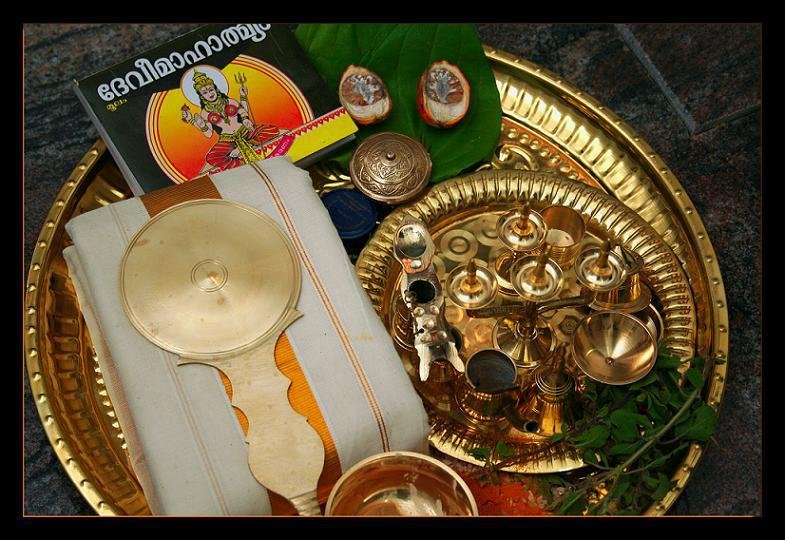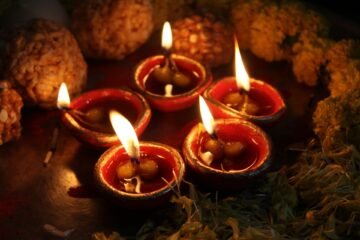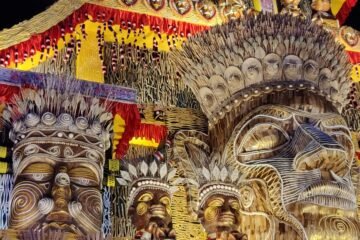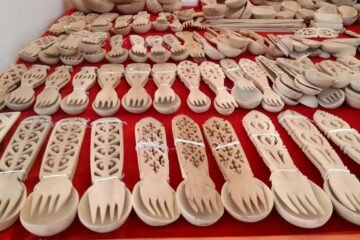In This Article You Will Read About:
A Mirror NOT made of glass!
Local legends surrounding a mysterious handicraft
The secret process of making Aranmula Kannadi
What makes Aranmula Kannadi so unique?
Where can you purchase this handicraft?
If you look into the Aranmula Kannadi and ask,
‘Mirror mirror on the wall,
Who’s the fairest one of all?’
The answer, for once, would probably be the mirror itself.
Aranmula kannadi, meaning ‘the mirror of Aranmula’, is one of the most rare and secretive crafts of India. It is a mirror, which unlike the regular mirrors all of us use, is not made from glass. Instead, it is a mirror made of a highly polished piece of metal!

Metal-mirrors have been produced and used around the world since 1400 BC. Known as Speculum Mirrors, these distortion-free mirrors have been instrumental in scientific discoveries like the discovery of Uranus where they were used in telescopes.
India too has a speculum mirror of its own- one with centuries of stories, and generations of secrets behind it. Aranmula Kannadi- let’s get to know the story behind this wonder mirror.
History of Aranmula Kannadi
The story of Aranmula Kannadi starts in Kerala, one of the southern states of India. A small village called Aranmula situated along the banks of river Pamba, nurtures one of the best-kept secrets of metallurgy and crafts in India. Aranmula is a heritage village which is also famous for the famed Aranmula Boat Race and is one of the best destinations to learn traditional art forms like Kathakali and Kalaripayattu.
It is said that around 400 years ago, the chief priest of Aranmula temple invited professional bronze casters, or Kannans, from Sankaran Koil near Tirunelveli to settle down in his region. In return for his patronage, the chief priest, himself a patron of crafts, wanted them to make metal utensils, bells and ornaments for the temple. After numerous attempts of mixing various proportions of copper and tin to make metallic alloys, the Kannans made a special alloy which shone like silver.
This beautiful alloy was polished and offered to God to make what is now called the Kannadi Bimbam, or Idol of Mirrors.
Another legend says that the chief priest noticed a crack in the crown of the local deity’s idol in Aranmula Temple. Upon conveying his message to the king, the head of the bronzesmith clan was called to the village and ordered to make a new crown within a matter of three days.
The bronzesmith clan chief was worried that making the crown would not be possible due to lack of materials and time, and conveyed his worries to his wife. And that night, when his wife was sleeping, she dreamt of a goddess who told her the precise ratio of metals which would give rise to the shiniest crown possible! She also told her to ask all the women in the community to help her procure the metals for the crown.
The next morning, the wife woke up and rushed to all the women of the community to tell them of her dream. So strong was their belief in her dream, that they contributed and sold their gold ornaments to buy appropriate amounts of copper and tin.
When the bronzesmith created the alloy and crafted the crown, it shone like a mirror! This crown was preserved in Aranmula Temple till 1942. The technique of creating the Aranmula Kannadi mirror remains a secret to this day and is known only to a few members of the Kannan community.
The Community Connect
Aranmula Kannadi is considered sacred. It is mentioned in the Puranas as the mirror of Goddess Parvati. The chief priest of Aranmula temple also laid down a rule that this mirror would be one of the eight auspicious articles used in major Hindu rituals like marriages. Initially, it was included in the form of a small mirror in the kumkuma cheppu, or vermillion container, and was very popular among the Malayali elite. While its prominence suffered with the emergence of cheap silica mirrors, it is still a part of the traditional Ashtamangalyam, or eight auspicious articles of religious ceremonies.
Making of Aranmula Mirrors
Lost Wax Process
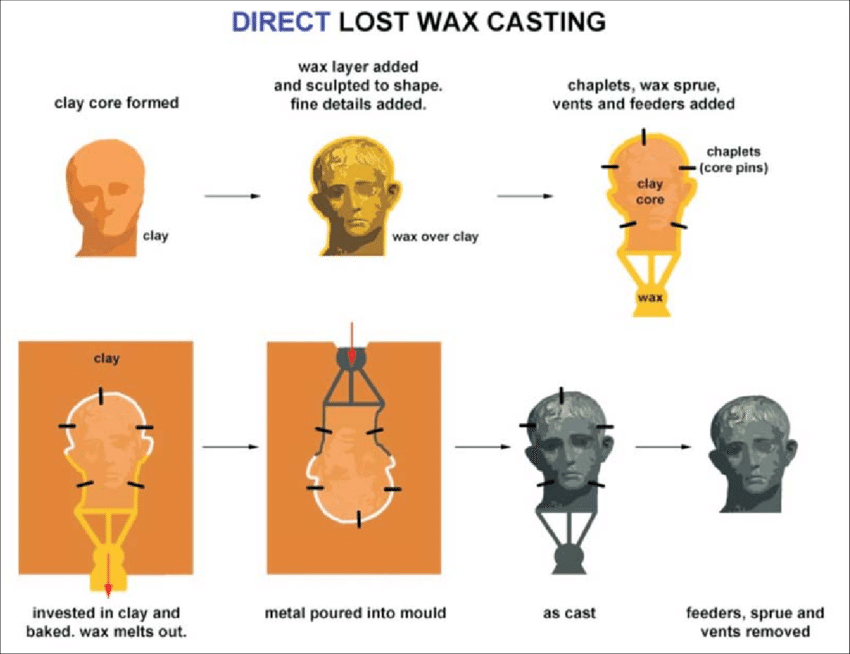
The Lost Wax method is used to create intricate metal sculptures which are duplicates of an original sculpture. This is a 6000 year-old technique which has been used in almost all continents of the world. It’s basic steps include:
- Creating a core of clay being made, roughly in the shape of the object being formed.
- It is then covered with a layer of wax which is cooled and chiselled to give detailed features of the object being cast.
- Vents and feeders for adding molten metal are added to the wax-covered core.
- A tougher mould made of clay is then created around this apparatus.
- The whole apparatus is heated at very high temperatures, melting the wax. This wax pours out of the vents connected to the apparatus in step 3, creating a gap between the core and mould.
- Purified metal is heated in a vessel called crucible and its molten form is poured into the gap formed by the lost wax.
- This metal cools down and takes the shape of the well-chiselled lost wax. The core and mould are then removed to derive the cast metal sculpture.
Aranmula Kannadi mirror is also made using a method similar to the lost wax method. Following are the steps to create this mirror:
1. Preparation of Clay Plates
Aranmula mirror artisans first dig up clay from the local area of Aranmula. The source region of the clay is very important, because this clay is extremely fine. This fine clay is used to create clay plates in a very highly skilled manner so as to produce extremely smooth plates. The smoothness of the plates will define the smoothness of the mirror being cast, and is hence of utmost importance.
2. Preparation of Wax Ring
A mixture of wax is made using beeswax, castor oil and coconut oil in a specific proportion. This wax mixture is then used to create a ring of wax a little thicker than the mirror being cast.
3. Preparation of Purified Aranmula Alloy
An alloy is prepared by mixing copper and tin in a highly specific ratio. Maintaining this ratio is very important to derive a mirror with the same properties as the Aranmula Kannadi.
This molten mixture is then melted together in a vessel called the crucible, and poured through a wooden or bamboo cylinder filled with rice bran. The molten metal burns the rice bran and its impurities are converted into carbon via a complex chemical process called carbonisation. This purified alloy solidifies in the cylinder in the shape of a rod. The rod is broken, melted and processed through the same purification steps four to five times till it is completely purified and the rod looks as bright as glass.
4. Creating the Mould
The clay plates are placed on top of each other, with the wax ring placed in between them. Cavities are made to serve as a venting channel from which the wax will melt out, as well as a pouring channel from where the metal will be poured.
Additional layers of clay are added to this apparatus in order to strengthen it to withstand the high temperature and pressure of the succeeding processes.
5. Melting of Wax
The mould is heated at a controlled temperature and the wax is melted out of the apparatus completely, leaving a gap between the clay plates.
6. Metal Pouring
A crucible vessel is attached to the inlet of the mould, which acts both as a melting vessel as well as a funnel. The purified metal alloy rod is broken and inserted in the crucible. The mould along with the metal-containing crucible is then sealed and heated over a fire fuelled with coconut husk and paddy for around 8 hours. The temperature ranges around 400 degree celsius, the melting point of bronze.
Once the artisan is convinced the metal has melted and poured into the gap created by the lost wax, the fire is extinguished.
7. Mirror Extraction
The mould is then allowed to cool down for a number of days. Once the artisan decides that the molten metal has cooled down and solidified, the mould and clay plates are removed and the mirror is taken out for further finishing.
8. Polishing and Finishing
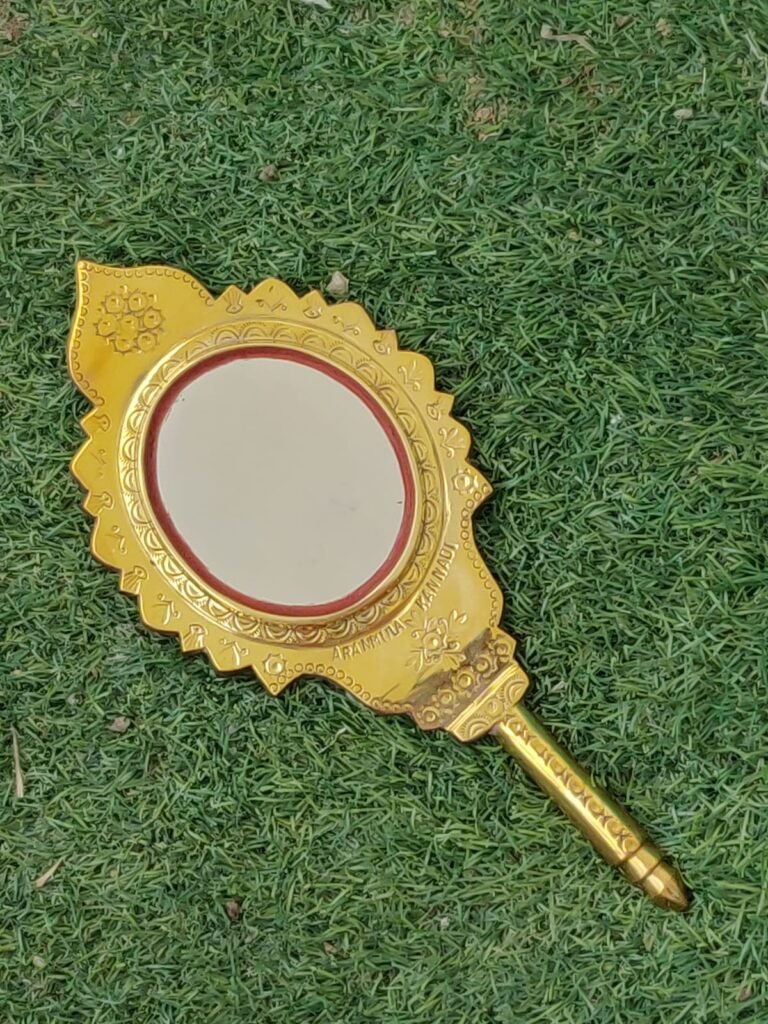
The mirror is then polished by highly skilled artisans using a special mix of rice bran paste, mud and a special oil from the local Aranmula region. The process of polishing is very specialised and takes upto 1-2 days.
The polished mirror is finally attached to a decorative bronze frame using lac and wax.
What’s Unique About The Aranmula Mirror?
Aranmula Kannadi is a GI-tagged handicraft from Kerala. Made through a highly skilled process, one mirror can take upto 6 months to finish. It was granted this status because the raw materials and expertise required to design these mirrors is unique to the Aranmula village. Check out what makes the Aranmula mirror unique:
True Reflection: A regular glass mirror reflects the image off its lower surface, so the ray of light entering the surface of the glass undergoes a little refraction. However, the reflecting plane of the Aranmula Kannadi is its surface, giving one the truest reflection of themselves!
Telescopic Effect: If you focus the Aranmula Kannadi towards distant objects, its telescopic effect makes them appear closer.
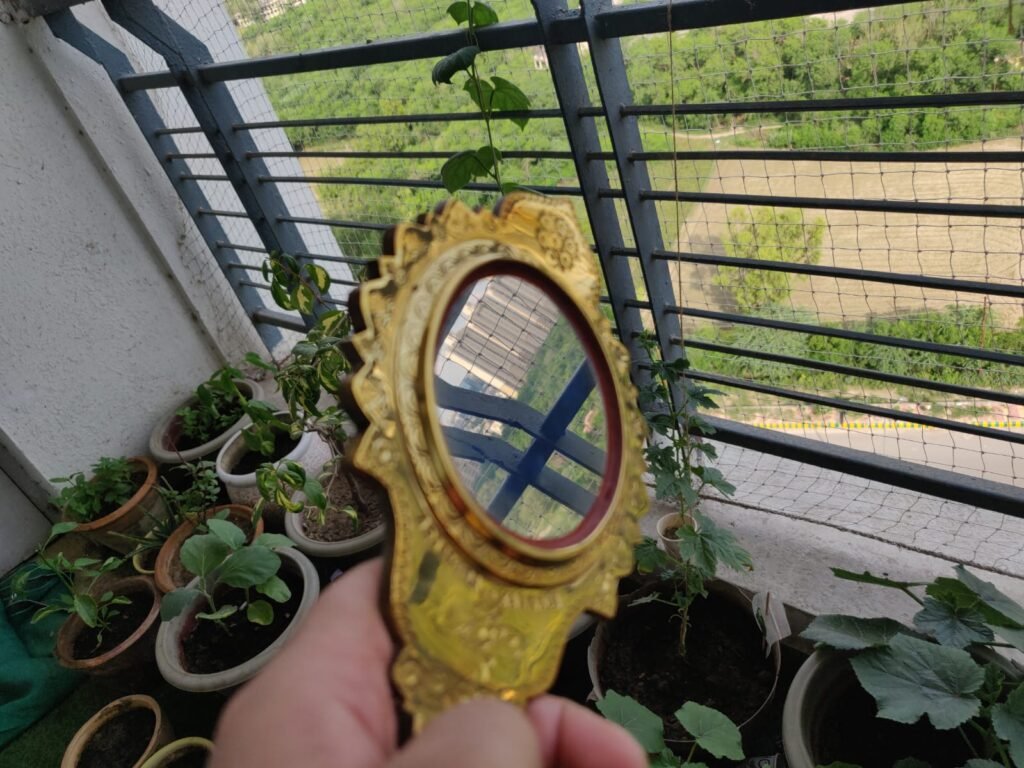
A Secret Process: Most of the process, including the moulding, has been a community secret of the Aranmula Kannadi artisans. Only few members of the community know the secret processes and proportions of raw materials used even though the artform is hundreds of years old.
A Special Sand: The local sand from Aranmula is instrumental in achieving the glistening finish of the mirror. The fineness of the sand cannot be obtained from sand anywhere else.
Secret Ingredients: It is said that the artisans add special local herbs to the metal alloy which results in its mirror-like glow. Local herbs are also in the polishing processes of the final mirror. The names of these herbs and their exact usage is again known only to the Aranmula Kannadi artisans.
Special Skills: The entire process is designed by special skills and years of experience. Ranging from controlling the heating temperature, the melting of the metal, the proportions of ingredients to be used, the extremely specific polishing method- all steps have been taught to highly trained artisans through generations of their ancestors.
To summarize, Aranmula Kannadi is a long-standing testament of how the rich history and artistic culture of India is well-preserved in even the tiniest villages of the country. Genuine bronze Aranmula Kannadi price starts from Rs. 1500 and increases based on the size of the mirror and its frame. You can purchase this wonderful GI Product of Kerala from the Aranmulakannadi website.
References:
- Geographical Indications Journal 3, Government of India
- Aranmulakannadi.org
- The Metal Casting Traditions of South Asia: Continuity and Innovation, Paul T Craddock, March 2015, Indian Journal of History of Science 50(1), DOI:10.16943/ijhs/2015/v50i1/48112
- Science Museum , United Kingdom


